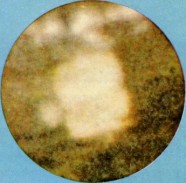Berkelium(IV) oxide
Appearance

| |
| Names | |
|---|---|
Other names
| |
| Identifiers | |
3D model (JSmol)
|
|
| |
| Properties | |
| BkO2 | |
| Molar mass | 278.9988 g/mol |
| Appearance | Brown solid |
| Structure[1] | |
| cubic | |
| Fm3m | |
a = 533.2 pm, b = 533.2 pm, c = 533.2 pm
| |
| Related compounds | |
Other anions
|
Berkelium(IV) sulfide |
Other cations
|
Americium(IV) oxide Curium(IV) oxide Californium(IV) oxide |
Related compounds
|
Berkelium(III) oxide |
Except where otherwise noted, data are given for materials in their standard state (at 25 °C [77 °F], 100 kPa).
| |
Berkelium(IV) oxide, also known as berkelium dioxide, is a chemical compound with the formula BkO2. This compound slowly decays to californium(IV) oxide.[2] It can be converted to berkelium(III) oxide by hydrogen reduction at 600 °C.[3]
- 2BkO2 + H2 → Bk2O3 + H2O
Production
[edit]Berkelium(IV) oxide is produced by burning berkelium metal in air at 1200 °C. It can also be produced by reacting berkelium(III) oxide with oxygen at 600 °C.[3]
References
[edit]- ^ Baybarz, R. D. (1968). "The berkelium oxide system". Journal of Inorganic and Nuclear Chemistry. 30 (7): 1769–1773. doi:10.1016/0022-1902(68)80352-5.
- ^ U.S Atomic Energy Commission. Division of Plans and Reports (1972). Fundamental Nuclear Energy Research. the University of Michigan. p. 100.
- ^ a b Peterson, J. (1967). "Crystal structures and lattice parameters of the compounds of berkelium I. Berkelium dioxide and cubic berkelium sesquioxide". Inorganic and Nuclear Chemistry Letters. 3 (9): 327–336. doi:10.1016/0020-1650(67)80037-0.
